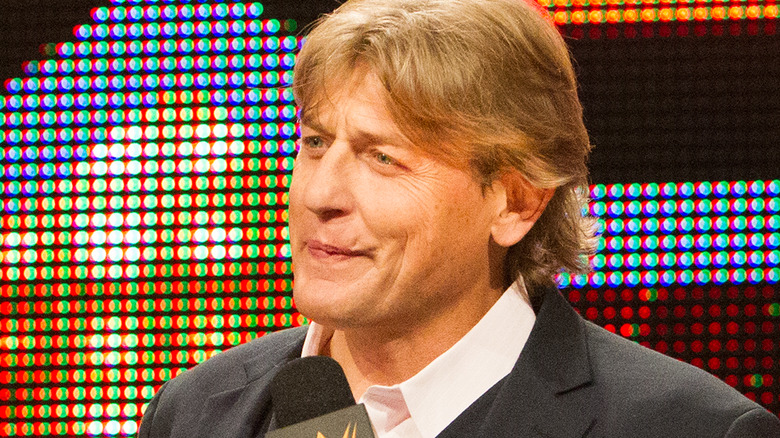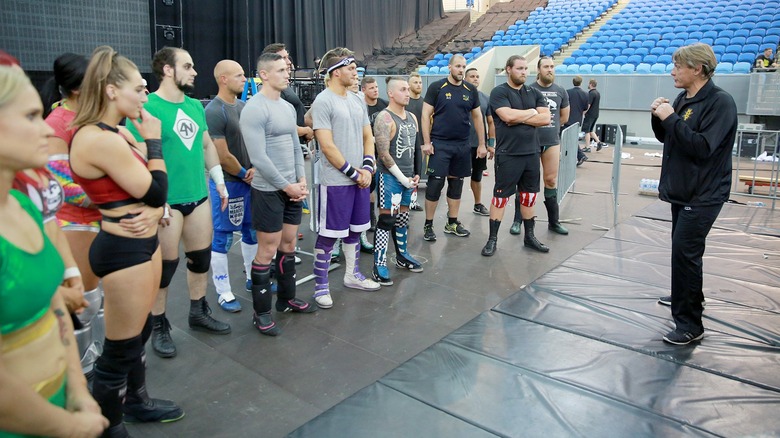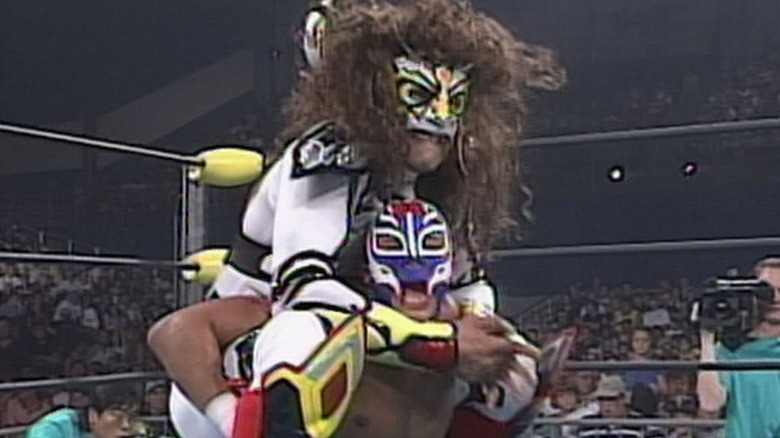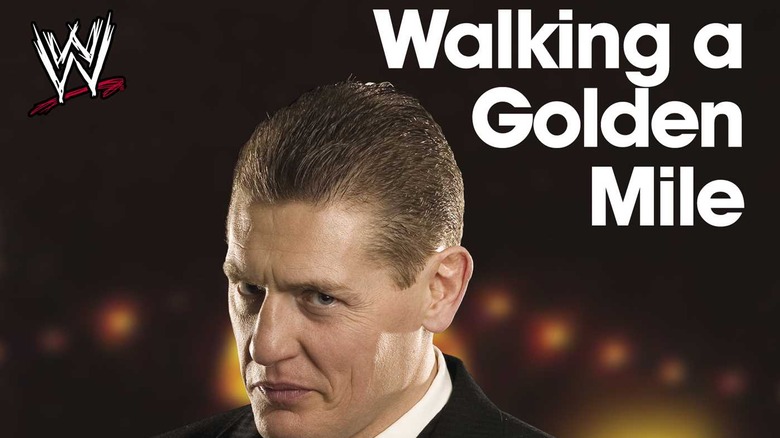Why William Regal Is Such A Valuable Asset In Pro Wrestling
We may receive a commission on purchases made from links.
Thanks to his sudden exit from AEW for a behind-the-scenes return from WWE — his AEW release keeps him off of WWE programming until 2024 – William Regal has been one of the hottest topics of conversation in pro wrestling towards the end of 2022. If you're a newer fan and/or don't follow things too deeply, the idea that he was so desired as to be wooed away from AEW for a vice president-level position in WWE's developmental system may come out of left field.
That goes doubly so when you consider that the most visible executive in the program is the canonical best in-ring performer in WWE history, Shawn Michaels. If you didn't see him at his peak in WCW and NJPW, you might not realize the level of wrestler that Regal was and how that can translate behind the scenes.
There's a lot more to it than that, though. Not every great talent is a great coach or mentor figure. There are some clear reasons why Regal has long been the kind of asset in building up younger wrestlers that would be so hotly desired by WWE, even setting his decades-long friendship with Paul "Triple H" Levesque aside. So let's take a look at a few of them, shall we?
Has a coach's mindset
Even if you didn't know that William Regal took a particular interest in mentoring younger wrestlers, both informally and during his time as a coach in the WWE developmental, listening to him talk about wrestling for any length of time would still make it obvious.
In interviews, on Twitter, and on his podcast, he's always giving out all sorts of tips for aspiring wrestlers to better themselves. Not just when it comes to in-ring performance, either: It's common to see him give basic pointers on learning to cut promos and what kinds of exercises will best condition the human body for what's needed in pro wrestling.
"[Pat Barrett had] always been a great talker and his advice was simple[:] 'Get yourself in front of a mirror and practice," Regal wrote in his memoir, "Walking a Golden Mile." "Which was what I did — and I tell people starting out to do it today." It's a suggestion he's routinely reiterated over the years. Ask him about how to improve in-ring footwork and he'll suggest taking boxing lessons because of how boxing footwork transfers to even simulated ring sports.
Ask for workout tips that will better condition a wrestler for the ring and he'll reply with some combination of Hindu Squats/Hack Squats/free squats, Hindu Push-Ups/diamond push-ups, and learning how to bridge. He'll also freely point to matches that he thinks young wrestlers should study, with his own matches sometimes being on the docket despite his relative lack of ego. He'll also beg wrestlers to stop letting opponents drop them on their heads. He's an endless resource.
Open-minded about different styles of wrestling
Pro wrestlers have historically not always been open-minded about in-ring styles other than the one they were raised in. William Regal, though, has never really subscribed to that kind of mindset. "I had several memorable matches with [Psicosis] and Rey Mysterio," he wrote of the Mexican Lucha libre standouts in his memoir. "They were smart lads and between us we worked out how to mix their high-flying moves with what I did. They weren't one-dimensional either — they knew how to wrestle. I clicked with Psicosis — he didn't speak much English so we never used to lay anything out beforehand. We'd just go in and wrestle — and it would always work."
This attitude extended to Regal's later work in WWE as a talent scout. When the other scouts were focused more on athletes without pro wrestling experience, like Gerald Brisco with collegiate wrestling and Mark Henry with strength sports, Regal was taking in the likes of Pro Wrestling Guerrilla's shows in southern California as well as events like Game Changer Wrestling's MMA-influenced Bloodsport cards. These shows featured the best unsigned talent in the world, most of whom worked very un-WWE styles in the ring.
As much of a fierce loyalty as he has to WWE's in-ring style as well as the traditional British style he was trained in, he doesn't consider them the only way to do things.
An open book about his battle with addiction
Unfortunately, between the wear and tear as well as the party culture, addiction is particularly prevalent in professional wrestling. And though the stigma that's long come with being open about having substance abuse issues has lessened in recent years, with Jon Moxley's candor about entering rehab being one of the most visible steps of late, he wasn't the first to be so open. That distinction most likely belongs to Kerry Von Erich in 1992, but one of the most important links in the chain is William Regal.
Addiction didn't become part of Regal's on-screen persona the way that it did with the likes of Eddie Guerrero and Jeff Hardy, but his memoir, "Walking a Golden Mile" is at its best when it serves as a chronicle as a path to sobriety. The level of candor is almost startling at times, particularly in recounting stories like passing out in his first meeting with Vince McMahon and becoming a hermit who did little more than drink lots of GHB.
It's not all doom and gloom: The book also spends a significant amount of time going over how he benefited from rehab, apart from the copious wrestling-centric sections. There are probably few better teaching aids for examining addiction in pro wrestling.



